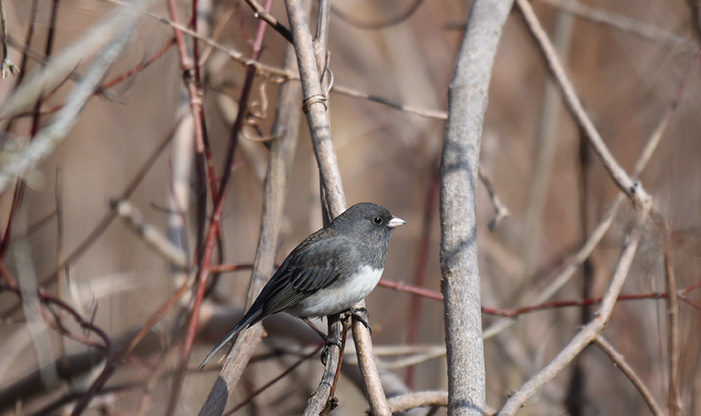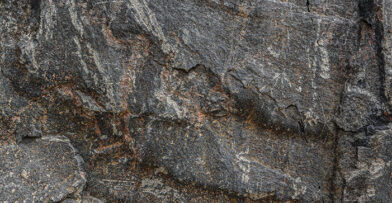While the American Robin signals the arrival of spring in Wisconsin, there is another bird whose presence indicates winter is on the horizon. The Dark-eyed Junco (Junco hyemalis) can be found in the midwest and across most of the United States after the breeding season winds down and temperatures begin to cool. Affectionately referred to as “snowbirds,” many Dark-eyed Juncos reside in Wisconsin throughout the winter.
Physical Characteristics of the Dark-eyed Junco
These medium-sized sparrows are considered to be one of the most abundant bird species in North America. They display a wide variation of physical characteristics in different regions across the continent. There are five forms of Dark-eyed Juncos with unique plumage patterns and up until the 1980’s they were known as separate species. The two most widespread forms are the “Oregon” Junco, in the western U.S. and the “slate-colored” Junco in the eastern U.S. and Canada. All of the forms have dark eyes, a plain patterning with a dark hood, and white outer tail feathers. In Wisconsin, we find the slate-colored form – identified by a gray hood, back, and sides, contrasting white belly, pink bill and legs, and white outer tail feathers, which are often flashed in flight. The sexes look similar, with females generally paler than males and sometimes females have a brownish-gray look. Juveniles are streaked all over but can still be identified by their white outer tail feathers.
In their overwintering range, these birds prefer habitats with partially open areas, such as suburbs, parks, gardens, fields, and roadsides. Since they often share these spaces with humans, we are able to observe these charismatic birds from a close distance. Dark-eyed Juncos are familiar backyard visitors who often forage under and around bird feeders. They are primarily seed-eaters but also eat a variety of insects during the breeding season. As ground feeders, their foraging techniques involve pecking in the leaf litter, hopping forward, scratching with both feet, and kicking backward. They also flit to low branches, gleaning food from leaves and twigs. Sometimes they produce short chip calls as they forage.
Migrations of the Dark-eyed Junco
We typically see them begin to arrive at the Center in large numbers at the end of September to early October. In some areas, they form large flocks in winter, consisting of other bird species like sparrows and even bluebirds. Juncos will stay in their winter range until they migrate north in late April or early May. At their breeding grounds in Canada, their preferred habitat is coniferous or mixed forest. When they arrive, males can become territorial, chasing off intruders and vocalizing with a series of calls. The male’s song is a simple musical trill, usually sung from a perch in a tree. The female chooses a nest site on or close to the ground and builds a woven nest with a variety of grasses, pine needles, leaves, moss, and other materials. She will usually lay three to six eggs and can have up to three broods in a season.
While Dark-eyed Juncos are considered to be of low conservation concern, a recent study has revealed that their population has declined by 168 million birds over the last 50 years. A lot of scientific research is being conducted on juncos and some evidence is emerging to show that juncos may be able to adapt to human-altered environments year-round. This could allow them to expand their breeding range and expend less energy on long migrations. Studies are also showing that these adaptations could be causing them to evolve at a much quicker rate than previously thought, changing their behavior, plumage, and migration patterns in only a few decades! You can help juncos by creating a bird-friendly yard with native plantings. Provide shrubs and trees for cover and take care by keeping feeders and birdbaths clean. You can also report observations of juncos and other birds to eBird to help scientists track their populations.


